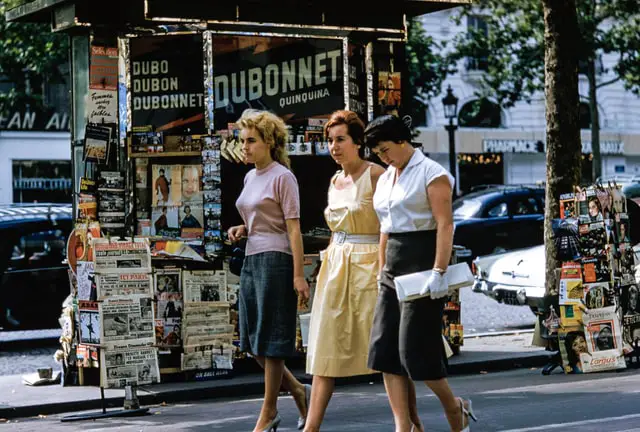
Have you ever wondered why vintage clothing has made such a massive comeback? From 90s streetwear to elegant 1950s dresses, fashion lovers everywhere are ditching fast fashion in favor of timeless, one-of-a-kind pieces. But who exactly is driving this trend? Is it Gen Z thrift shoppers hunting for sustainable finds, or seasoned collectors seeking rare designer gems?
Understanding the target market for vintage clothing isn’t just about identifying who buys it—it’s about uncovering the motivations, preferences, and shopping habits that fuel this thriving industry. Whether you’re a seller looking to attract the right customers or a fashion enthusiast curious about the growing demand, this guide will walk you through the key demographics, shopping behaviors, and marketing strategies that define the vintage clothing market. Let’s dive in!
Why Vintage Clothing is Trending
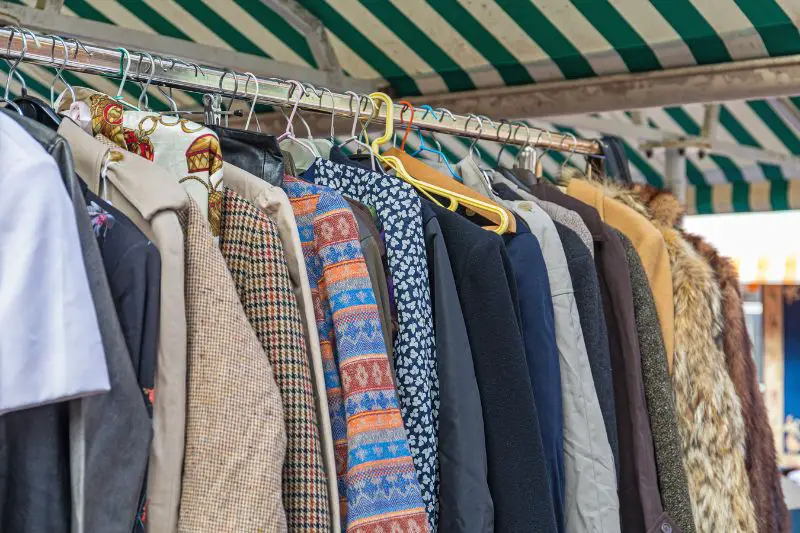
The vintage clothing market has seen a remarkable surge in popularity, driven by shifting consumer values and evolving fashion trends. Understanding why people gravitate toward vintage fashion can help businesses tap into this growing demand and position themselves effectively in the market.
Sustainability and Eco-Conscious Shopping
One of the biggest drivers of the vintage clothing boom is the growing awareness of fashion’s environmental impact. The fast fashion industry contributes to excessive waste, pollution, and unethical labor practices. In response, many consumers—particularly younger generations—are choosing sustainable alternatives, and vintage clothing fits perfectly into this ethos.
According to a report by ThredUp, the secondhand clothing market is expected to reach $350 billion globally by 2027. Consumers are increasingly prioritizing sustainability, and vintage clothing allows them to reduce waste while expressing their unique style. Brands that emphasize the environmental benefits of vintage fashion can attract this conscious consumer base.
Unique and One-of-a-Kind Fashion
Unlike mass-produced fast fashion, vintage clothing offers exclusivity. Many buyers are drawn to vintage pieces because they are rare, historically significant, or simply unlike anything available in mainstream retail stores. Wearing vintage allows individuals to stand out, embrace nostalgia, and cultivate a distinctive personal style.
This desire for uniqueness is particularly strong among younger consumers. Platforms like Instagram and TikTok have amplified the demand for statement pieces that set individuals apart from the crowd. Vintage stores that curate rare and standout items can effectively capture this audience.
Nostalgia and Retro Appeal
Fashion is deeply cyclical, with trends from past decades constantly making a comeback. From 90s grunge to 70s bohemian aesthetics, vintage fashion appeals to people who want to relive or reinterpret styles from previous generations.
This nostalgia-driven demand is evident in the resurgence of iconic brands and styles. For instance, the popularity of vintage Levi’s jeans, band t-shirts, and classic sneakers reflects a widespread appreciation for retro aesthetics. Fashion-conscious consumers are actively seeking out pieces that connect them to cultural moments, music, and historical fashion trends.
High-Quality Craftsmanship
Another key factor driving interest in vintage clothing is the superior craftsmanship found in older garments. Many vintage items were made with higher-quality fabrics, stronger stitching, and more attention to detail compared to today’s fast fashion pieces.
This aspect particularly appeals to consumers looking for durability and timeless style. Vintage designer pieces, for example, are often considered investment-worthy because they maintain their value and can even appreciate over time. Sellers who highlight the quality and longevity of their vintage offerings can attract buyers who prioritize well-made garments.
Identifying the Target Market for Vintage Clothing
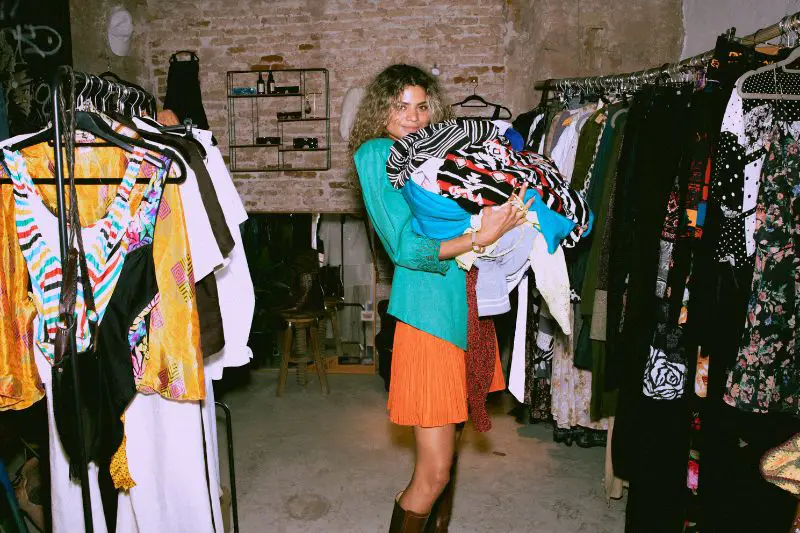
Understanding your target market is essential for building a successful vintage clothing business. While vintage shoppers come from diverse backgrounds, they share common motivations, shopping behaviors, and style preferences. By identifying key demographics and psychographics, sellers can tailor their offerings and marketing strategies to connect with their ideal customers more effectively.
Demographics of Vintage Clothing Buyers
Vintage fashion attracts consumers across different age groups, income levels, and lifestyles. Each segment has unique buying habits, style preferences, and reasons for choosing vintage.
Gen Z (18-25)
Gen Z is a major driver of the vintage fashion resurgence. This generation is drawn to vintage clothing for several reasons:
- Sustainability: Many Gen Z shoppers prioritize eco-friendly choices, and buying secondhand aligns with their values of reducing waste and promoting sustainable fashion.
- Affordability: Vintage shopping offers stylish, high-quality alternatives to fast fashion at competitive prices.
- Self-Expression: Gen Z views fashion as a form of identity and is more likely to mix and match vintage with modern pieces to create unique looks.
- Influence of Social Media: Platforms like TikTok and Instagram shape their shopping habits, with viral aesthetics (e.g., Y2K, 90s grunge, and indie sleaze) influencing demand for specific vintage styles.
Where They Shop:
- Online platforms such as Depop, Poshmark, and Instagram Shops.
- Thrift stores and flea markets for affordable and one-of-a-kind finds.
- Vintage pop-up shops promoted through social media.
Millennials (26-40)
Millennials are another key demographic for vintage clothing, drawn by nostalgia, sustainability, and quality craftsmanship. Compared to Gen Z, they tend to have higher disposable income and are willing to invest in timeless vintage staples.
- Nostalgia: Many Millennials seek styles reminiscent of their youth, such as 90s denim jackets, vintage band tees, or early 2000s designer pieces.
- Quality Over Quantity: They appreciate well-made, durable clothing that offers longevity compared to fast fashion.
- Work and Occasion Wear: Some Millennials look for vintage business casual pieces, such as blazers and dresses, or unique outfits for themed events and weddings.
Where They Shop:
- Online marketplaces like Etsy and eBay for curated, higher-end vintage finds.
- Boutique vintage stores specializing in quality craftsmanship.
- Thrift stores for affordable and sustainable fashion choices.
Gen X and Baby Boomers (41+)
Older consumers approach vintage fashion differently from younger generations. While some are casual buyers, others are collectors searching for high-value, designer vintage pieces.
- Authenticity and Craftsmanship: Gen X and Boomers value high-quality materials and tailored garments, often preferring well-preserved items.
- Sentimental Value: Many shop for vintage clothing that reminds them of past decades or personal memories.
- Investment Pieces: Collectors in this age group seek rare, high-end designer vintage for resale or long-term wardrobe investments.
Where They Shop:
- High-end vintage boutiques and specialty stores.
- Auction houses and curated online platforms for luxury and collectible pieces.
- Physical thrift stores and estate sales for unique finds.
Style Preferences and Fashion Subcultures
Beyond demographics, vintage clothing buyers often fall into specific fashion subcultures or style preferences. Recognizing these niche groups can help sellers refine their product selection and marketing approach.
Retro Fashion Enthusiasts
These buyers appreciate vintage styles from specific decades, from 1920s flapper dresses to 1970s bohemian fashion. They prioritize authenticity and often seek garments with historical significance.
Popular Items:
- 1950s pin-up dresses and swing skirts.
- 1960s mod dresses and statement coats.
- 1970s bell-bottom jeans and boho maxi dresses.
Streetwear and Sportswear Fans
Vintage streetwear has gained immense popularity, particularly among younger consumers who appreciate brand heritage and exclusivity.
Popular Items:
- 80s and 90s graphic tees from brands like Nike, Adidas, and Tommy Hilfiger.
- Retro sneakers such as vintage Jordans or Converse.
- Varsity jackets, windbreakers, and oversized hoodies.
Luxury Vintage Collectors
These buyers focus on high-end designer vintage, seeking investment pieces from legacy brands like Chanel, Gucci, and Yves Saint Laurent. They prioritize authenticity and condition.
Popular Items:
- Vintage handbags, such as classic Chanel quilted bags.
- 80s and 90s couture dresses and structured blazers.
- Timeless accessories, including silk scarves and jewelry.
Bohemian and Indie Fashion Followers
The indie and bohemian fashion community gravitates toward vintage pieces that exude a free-spirited, artistic aesthetic. These consumers appreciate handmade details, embroidery, and flowing silhouettes.
Popular Items:
- 1970s floral maxi dresses and peasant blouses.
- Vintage leather bags and woven accessories.
- Unique, handcrafted jewelry and embroidered pieces.
Cosplayers and Historical Reenactors
Some vintage buyers shop for historically accurate pieces for theater productions, themed events, or cosplay. This niche audience values detail, quality, and authenticity.
Popular Items:
- Edwardian lace blouses and Victorian-era dresses.
- 1920s beaded gowns for Gatsby-themed parties.
- Mid-century suits and military-inspired fashion.
Shopping Behavior and Buying Power
Understanding how different customer groups shop and what influences their purchasing decisions can help businesses optimize their marketing strategies.
Online vs. In-Store Shopping
Younger consumers (Gen Z and Millennials) predominantly shop online, using platforms like Depop, Etsy, and Instagram. They rely on social media trends, influencer recommendations, and digital storefronts for purchasing decisions.
Older buyers and collectors prefer physical stores where they can inspect garment quality and authenticity. Vintage fairs, flea markets, and specialty boutiques cater to this demographic.
Willingness to Pay for Vintage
- Budget Shoppers: Gen Z and younger Millennials often look for affordable vintage finds and are drawn to thrift store pricing and budget-friendly online shops.
- Mid-Range Buyers: Millennials and older Gen Z shoppers are willing to pay more for well-preserved vintage that aligns with current fashion trends.
- Luxury Buyers and Collectors: Gen X and Baby Boomers, along with high-end vintage enthusiasts, invest in premium designer pieces and rare finds.
Influence of Celebrities and Social Media
Vintage fashion trends are often shaped by pop culture, celebrities, and social media. When high-profile figures wear vintage pieces, demand for similar items spikes.
For example:
- Bella Hadid and Hailey Bieber’s love for 90s and Y2K fashion has increased demand for vintage cargo pants, baguette bags, and baby tees.
- Harry Styles’ retro-inspired wardrobe has driven interest in 70s flared trousers and crochet tops.
- The resurgence of 80s power dressing in TV shows like Stranger Things and The Crown has revived demand for oversized blazers and vintage tailoring.
Where to Find Your Target Market
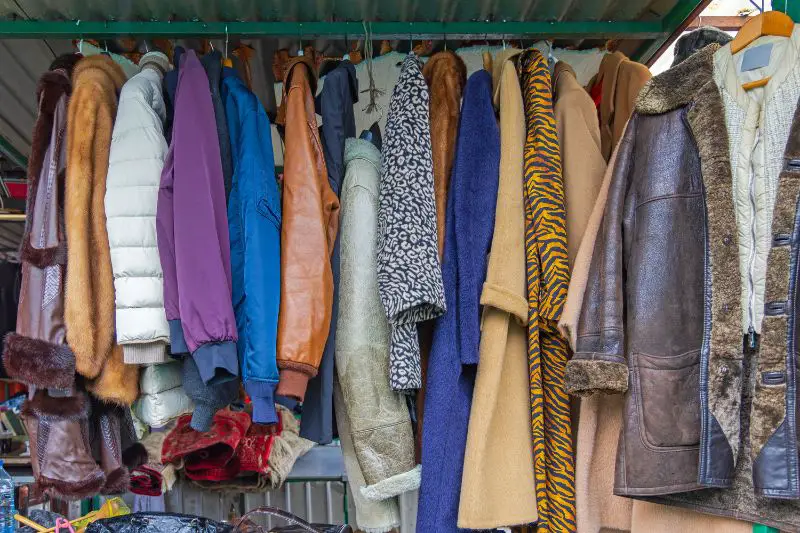
Once you understand who buys vintage clothing, the next step is identifying where to connect with them. Different demographics and style groups prefer different shopping platforms and experiences. A well-rounded approach that includes online and offline channels will maximize your reach and sales potential.
Online Marketplaces
E-commerce has revolutionized the vintage clothing industry, making it easier than ever for buyers to find unique pieces. Online marketplaces offer convenience, a wide selection, and access to international customers.
Depop and Poshmark
Depop and Poshmark cater primarily to younger buyers, particularly Gen Z and Millennials. These platforms focus on social selling, where users engage with listings through likes, comments, and shares. Vintage streetwear, 90s fashion, and Y2K trends perform exceptionally well here.
To succeed on these platforms, sellers should:
- Use high-quality, well-lit photos showcasing styling ideas.
- Write detailed product descriptions, including measurements and fabric details.
- Engage with followers by responding to comments and messages promptly.
Etsy and eBay
Etsy attracts buyers interested in curated, high-quality vintage pieces, particularly from niche style groups such as bohemian fashion enthusiasts and historical reenactors. eBay, on the other hand, serves a broader audience, from casual shoppers to serious collectors hunting for rare designer items.
Effective selling strategies for these platforms include:
- Offering detailed product histories and provenance for authenticity.
- Using SEO-optimized titles and tags to improve visibility in search results.
- Providing competitive pricing and clear return policies to build buyer confidence.
Instagram and TikTok Shops
Social commerce is becoming a dominant force in vintage fashion. Instagram and TikTok Shops allow sellers to market directly to engaged audiences through visually appealing posts and short-form videos.
For success on these platforms:
- Utilize Instagram Reels and TikTok videos to showcase vintage hauls and styling ideas.
- Collaborate with influencers and content creators to expand reach.
- Host live sales to create urgency and boost engagement.
Physical Stores and Vintage Markets
While online sales are booming, many vintage buyers still prefer in-person shopping experiences, especially those who value garment quality and fit.
Thrift Stores and Flea Markets
Thrift stores and flea markets attract bargain hunters, sustainability-conscious shoppers, and vintage enthusiasts looking for unexpected finds. These locations are especially popular among Gen Z and Millennials, who enjoy the thrill of the hunt.
To maximize success in these spaces:
- Organize clothing racks by era or style to help shoppers navigate selections.
- Offer special deals, such as bundle discounts or student pricing, to encourage purchases.
- Promote upcoming sales or rare inventory drops through social media to drive foot traffic.
Boutique Vintage Shops
High-end vintage stores appeal to collectors and shoppers looking for premium, well-preserved pieces. These boutiques often specialize in designer labels, historical fashion, or curated themes.
For boutique success:
- Create a compelling store atmosphere with carefully designed displays and a unique shopping experience.
- Offer personal styling services to help customers incorporate vintage pieces into their wardrobes.
- Build an online presence to showcase inventory and drive interest beyond local shoppers.
Fashion Events and Pop-Ups
Vintage clothing markets, themed fashion events, and temporary pop-up shops provide excellent opportunities to connect with passionate buyers. These events allow sellers to build relationships with customers, offer styling advice, and create memorable shopping experiences.
To make the most of these opportunities:
- Choose events that align with your target audience’s interests and style preferences.
- Design an eye-catching booth with creative displays and signage.
- Collect customer emails or social media follows to maintain engagement after the event.
By strategically placing your vintage clothing business in the right locations—both online and offline—you can effectively reach your ideal buyers and drive consistent sales.
How to Market Vintage Clothing to the Right Audience
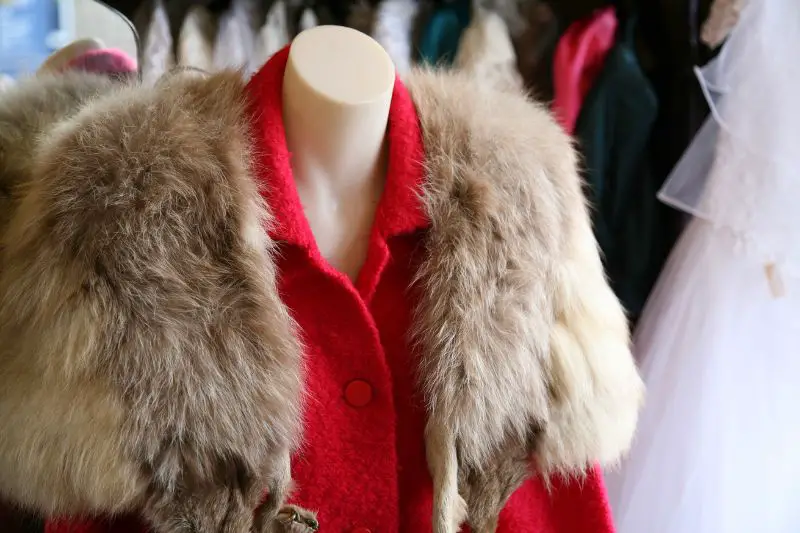
Successfully selling vintage clothing requires more than just having great inventory—it’s about reaching the right customers with a compelling message. A strong marketing strategy helps differentiate your brand, build a loyal following, and drive consistent sales.
Crafting a Compelling Brand Story
Consumers today want more than just products—they want to connect with brands that align with their values and interests. A well-crafted brand story helps establish authenticity and builds trust with potential buyers.
Define Your Unique Selling Proposition
What makes your vintage store stand out? Whether it’s a focus on rare 80s streetwear, high-end designer pieces, or sustainable fashion, defining your niche helps attract the right audience.
For example, a brand specializing in vintage denim can highlight the durability, history, and unique fades of each piece. Meanwhile, a boutique offering 1950s dresses can emphasize the timeless elegance and craftsmanship of mid-century fashion.
Incorporate Storytelling in Your Marketing
Sharing the history behind your pieces can create an emotional connection with buyers. Instead of just listing a “vintage leather jacket,” describe its era, brand heritage, and potential styling ideas. Consider featuring customer stories or styling transformations to showcase how vintage clothing can be integrated into modern wardrobes.
Leveraging Social Media and Influencer Marketing
Social media is one of the most powerful tools for marketing vintage clothing. Platforms like Instagram, TikTok, and Pinterest allow sellers to showcase their inventory, build brand awareness, and engage directly with potential customers.
Create Engaging Content
High-quality images and videos are essential for capturing attention. Consider these content ideas:
- Flat lays and styled outfit shots: Show how vintage pieces can be worn in contemporary ways.
- Behind-the-scenes sourcing stories: Take followers on thrift and estate sale hunts.
- Educational content: Share tips on identifying authentic vintage items, caring for delicate fabrics, or styling different eras.
- Trend-driven posts: Tap into trending aesthetics like Y2K fashion or cottagecore to attract style-conscious buyers.
Collaborate with Influencers and Fashion Enthusiasts
Influencer partnerships can significantly boost your reach. Look for content creators who align with your brand aesthetic and have an engaged following. Micro-influencers (5,000–50,000 followers) often have highly loyal audiences and can drive meaningful sales.
Encourage influencers to:
- Style and showcase your pieces in unique ways.
- Share personal stories about their love for vintage fashion.
- Provide discount codes or exclusive offers for their followers.
Using SEO and Content Marketing
An effective SEO strategy ensures that your store appears in search results when potential buyers are looking for vintage clothing.
Optimize Product Listings and Website Content
Include relevant keywords in your product descriptions, such as:
- “Vintage Levi’s 501 jeans from the 90s”
- “Authentic 70s boho maxi dress with floral embroidery”
- “Rare 80s Nike windbreaker in excellent condition”
Detailed and descriptive listings improve search rankings and help buyers make informed decisions.
Start a Blog or Educational Resource
A blog can position your brand as an authority in vintage fashion while driving organic traffic to your site. Consider writing about:
- How to identify real vintage vs. reproductions.
- The history of iconic fashion brands and trends.
- Tips for curating a sustainable, vintage-inspired wardrobe.
Emphasizing Sustainability and Ethical Fashion
Many vintage shoppers are drawn to the industry for its environmental benefits. Highlighting sustainability in your marketing can attract eco-conscious buyers.
Share Your Commitment to Sustainability
Showcase how buying vintage reduces waste, lowers carbon footprints, and promotes slow fashion. Use statistics and visuals to reinforce the positive impact of secondhand shopping.
Partner with Sustainable Initiatives
Collaborate with sustainability-focused brands, nonprofits, or eco-friendly influencers. Hosting clothing swap events or offering repair and upcycling workshops can further solidify your brand’s commitment to responsible fashion.
Engaging with Niche Communities and Forums
Vintage buyers often belong to niche communities with shared fashion interests. Engaging in these spaces can help build trust and drive traffic to your store.
Participate in Online Groups and Forums
Join Facebook groups, Reddit threads, and vintage fashion forums where enthusiasts discuss trends, sourcing tips, and outfit ideas. Providing valuable insights (rather than direct promotions) can establish credibility and attract organic interest.
Host Themed Virtual Events or Live Sales
Live selling events on Instagram or TikTok allow you to showcase products in real-time and interact with customers directly. Themed drops—such as “90s Nostalgia Night” or “Vintage Workwear Edit”—create excitement and exclusivity, driving impulse purchases.
Conclusion
Successfully selling vintage clothing goes beyond curating great pieces—it requires a deep understanding of your target market and a strategic approach to marketing. By identifying key demographics, leveraging the right sales channels, and crafting compelling brand messaging, you can effectively connect with the right buyers.
A strong presence on social media, optimized online listings, and engagement with niche communities will help expand your reach. Additionally, emphasizing sustainability and authenticity can build trust and loyalty among conscious consumers.
